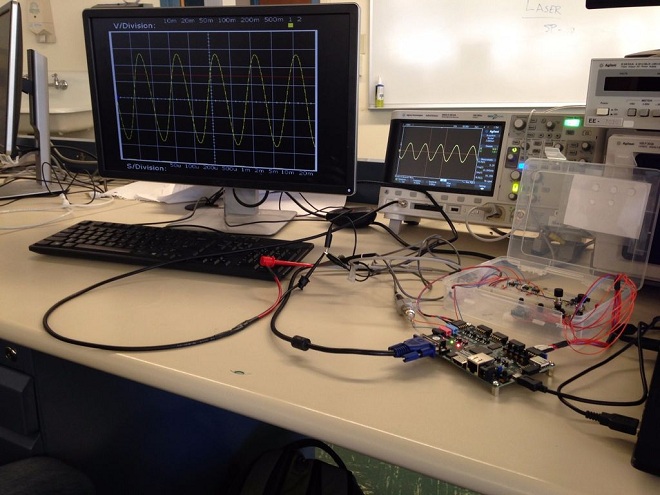An oscilloscope is an electronic piece of equipment that shows signal voltages on a graph. It shows many types of signals, such as sound for example, can be converted into voltages and be displayed on an oscilloscope. Oscilloscopes have multiple usages in many industries, like medicine, science, telecommunications etc. There are two types of oscilloscopes that can be found – analog and digital. The digital oscilloscopes are your go-to type. If you’re not a collector, there’s no reason to buy an analog one since it doesn’t offer any advantages over its digital counterpart and have limited part availability and performance. So now that we’ve decided that a digital one is the right choice, here are some things to look for when you buy digital oscilloscope.

Bandwidth
Generally, you want to purchase an oscilloscope with at least five times higher bandwidth than the max frequency of the signals you want to measure. This will ensure an accurate representation of the waveform. A higher bandwidth oscilloscope can be somewhat expensive, so you might have to compromise according to your budget.
Sample Rate
Before you buy digital oscilloscope, you should know that there are two types of sample rates: real-time and equivalent-time. The rates are specified in mega or giga samples per second. Manufacturers will often list the higher spec in order for their product to look better. Equivalent-time samples work only if the signal is repetitive as it will build up waveforms overtime. Real-time samples on the other hand, are used if the signal is transient, varying or single-shot and is typically a few magnitudes lower in rate than the equivalent time samples.
Memory Depth
This is important as all your captures are stored in a memory. The amount of memory that the scope has will determine how long it will store the memory before having to remove it. This is especially important when zooming in on signals. Sample rate + Time Across Display = Memory Depth
Accuracy and Resolution
Most modern oscilloscopes use an 8 bit resolution. That means the voltage range is divided into 256 vertical steps. However, for some applications, such as noise, audio and vibration you should consider 12 or 16 bits for more accurate results. Oscilloscopes with 12 and more bits are called precision oscilloscopes.
There are also other specifications that can differentiate one oscilloscope from another, but for the sake of simplicity, we’ll keep it as it is. The aforementioned specs are your essential must-knows when it comes to deciding what kind of oscilloscope you should purchase.
























